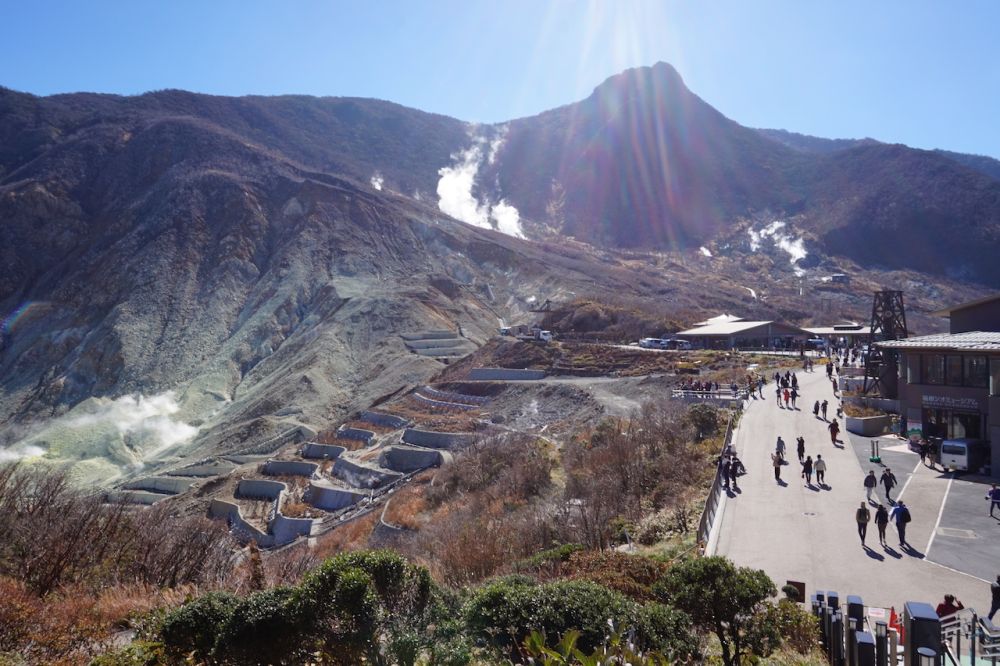

When planning a visit to Owakudani in Hakone, timing is important to get the most out of your trip. This volcanic valley, famous for its sulfurous fumes, hot springs, and steamed black eggs believed to increase longevity, is most comfortably visited during the spring, between late March to May, or in the fall, from September to November. During these months, the weather in Hakone is generally mild and pleasant, with little rainfall, allowing for clear views of the surrounding scenery and the iconic Mount Fuji. Spring is characterized by the blooming of cherry blossoms and fresh greenery, making it a visually appealing time for photographers and nature enthusiasts. Meanwhile, autumn is equally spectacular with vibrant foliage that transforms the landscape into a rich tapestry of red, gold, and yellow hues.
Summer, from June to August, can be hot and humid, but it is still a popular time for tourists. However, you should be prepared for the possibility of heavy rains and occasional typhoons that may obscure views and disrupt travel plans. The Owakudani area can be more crowded during these months, especially during the Obon holiday in mid-August. Winter, between December and February, offers a different experience with colder temperatures and possibly snow-covered landscapes. While winter visits are less common, they also mean fewer crowds. Keep in mind that access to some trails may be limited due to snow or maintenance, and steamed eggs against a snowy backdrop create a unique contrast. Regardless of when you visit, always check for volcanic activity updates and any potential travel advisories, as Owakudani is an active volcanic area and conditions can change rapidly.
| Month | Min Temp | Max Temp |
|---|---|---|
| January | NA | 5 °c |
| February | NA | 6 °c |
| March | 3 °c | 10 °c |
| April | 8 °c | 15 °c |
| May | 13 °c | 20 °c |
| June | 17 °c | 23 °c |
| July | 20 °c | 27 °c |
| August | 21 °c | 28 °c |
| September | 18 °c | 24 °c |
| October | 12 °c | 18 °c |
| November | 7 °c | 13 °c |
| December | 2 °c | 8 °c |